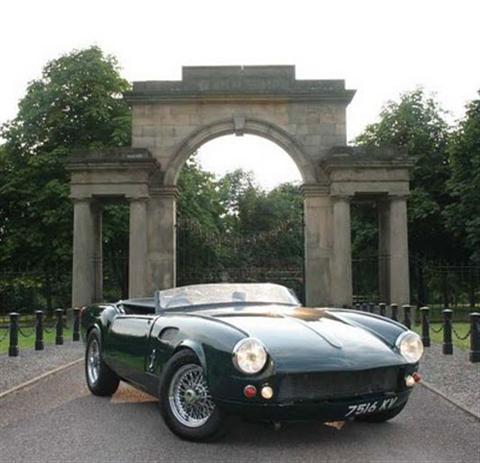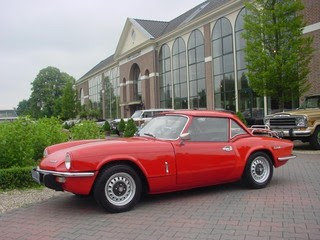Triumph Spitfire Classic Cars - Spitfire Mark III Part 1
 12:10 PM
12:10 PM
 Goohara
, Posted in
Mk III Spitfire
,
Triumph Spitfire
,
Triumph Spitfire Classic Cars
,
0 Comments
Goohara
, Posted in
Mk III Spitfire
,
Triumph Spitfire
,
Triumph Spitfire Classic Cars
,
0 Comments
Triumph Spitfire Classic Cars - Spitfire Mark III
The Mark III, introduced in March 1967, was the first major facelift to the Spitfire. The front bumper was raised in response to new crash regulations, and although much of the bonnet pressing was carried over, the front end looked quite different. The rear lost the overriders from the bumper but gained reversing lights as standard (initially as two separate lights on either side of the number plate, latterly as a single light in a new unit above the number plate) the interior was improved again with a wood-veneer instrument surround. A folding hood replaced the earlier "build it yourself" arrangement. For most of the Mark III range, the instrument cluster was still centre-mounted (as in the Mark I and Mark II) so as to reduce parts bin counts (and thereby production costs) for right-hand and left-hand drive versions.
The 1147 cc engine was replaced with a bored-out 1296 cc unit, as fitted on the new Triumph Herald 13/60 and Triumph 1300 saloons. In SU twin-carburettor form, the engine put out a claimed 75 bhp (56 kW) and made the Mark III a comparatively quick car by the standards of the day. Popular options continued to include wire wheels, a hard top and a Laycock de Normanville overdrive, and far more relaxed and economical cruising at high speeds. The Mark III was the fastest Spitfire yet, achieving 60 mph (97 km/h) in 12.5 seconds.The Mark III actually continued production into 1971, well after the Mark IV was introduced.
The 1147 cc engine was replaced with a bored-out 1296 cc unit, as fitted on the new Triumph Herald 13/60 and Triumph 1300 saloons. In SU twin-carburettor form, the engine put out a claimed 75 bhp (56 kW) and made the Mark III a comparatively quick car by the standards of the day. Popular options continued to include wire wheels, a hard top and a Laycock de Normanville overdrive, and far more relaxed and economical cruising at high speeds. The Mark III was the fastest Spitfire yet, achieving 60 mph (97 km/h) in 12.5 seconds.The Mark III actually continued production into 1971, well after the Mark IV was introduced.










































